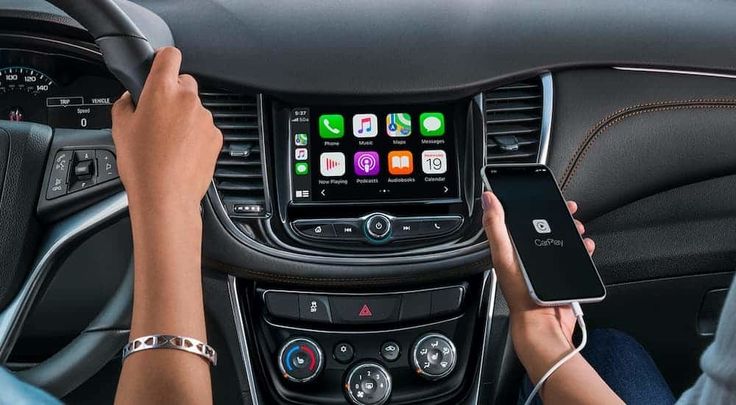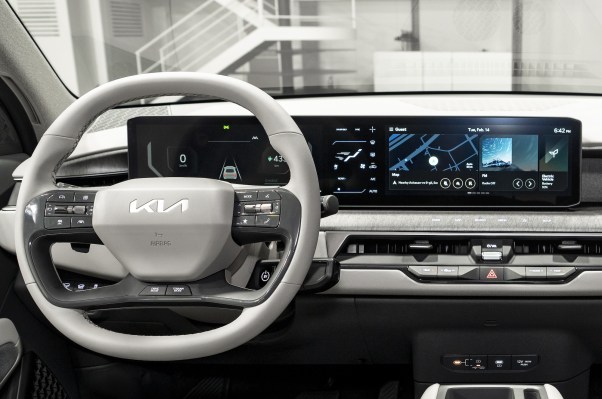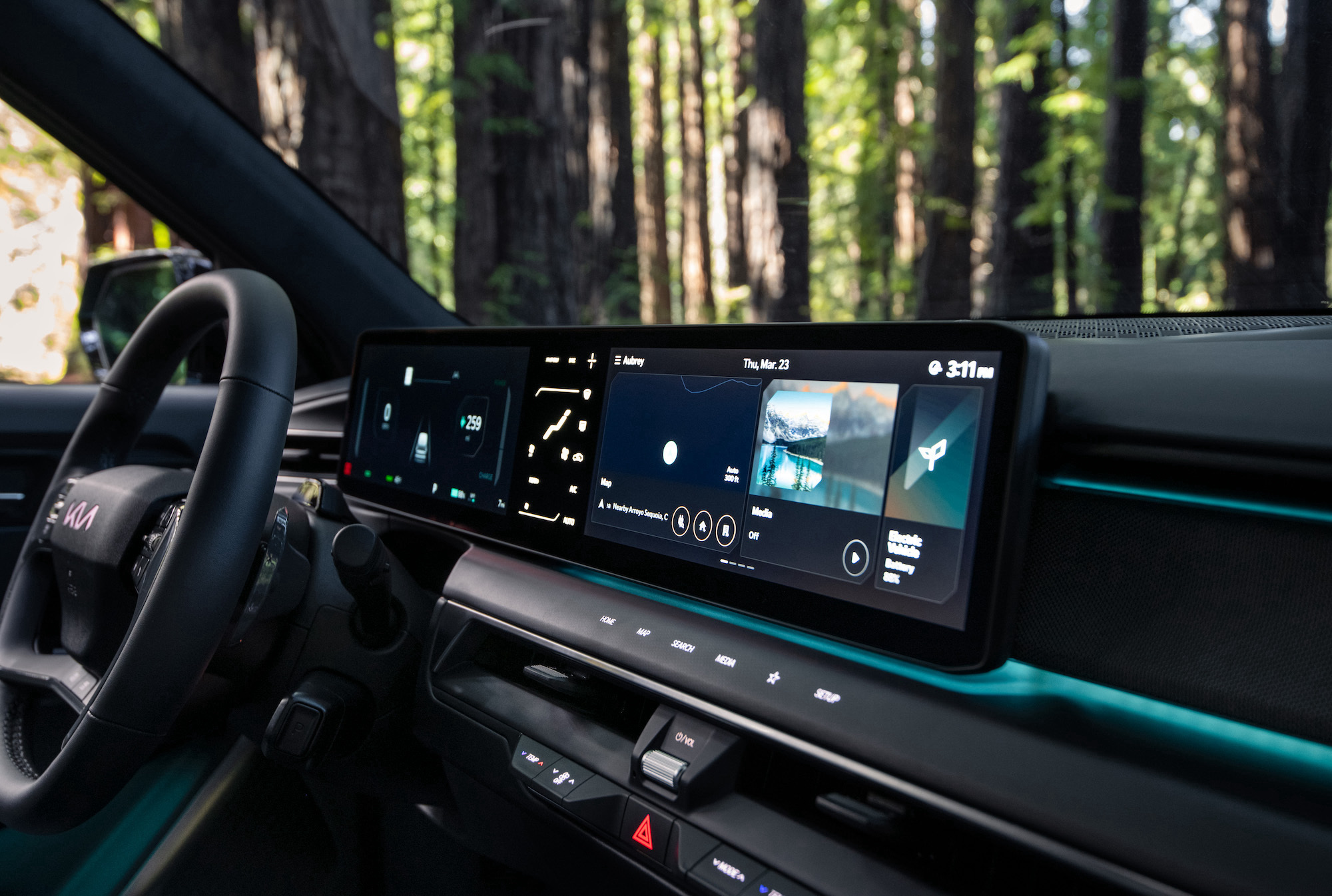When car companies use the term “flagship,” traditionally that means a high-end supercar or a plush luxury sedan. But the all-new 2024 Kia EV9 is a flagship of a different kind.
It’s a crossover, for one. And a big one with three rows of seats, meant for big families. It’s electric, too, and capable of fast-charging its battery from 10% to 80% in under 25 minutes. Pricing hasn’t been announced yet, but it’ll likely be the most expensive Kia in the lineup.
All told, the EV9 is a big move for a brand that just a few years ago was synonymous with cheap airport rental cars and “No Credit? No problem” dealerships. Now Kia is becoming an electric-focused, high-tech enterprise with huge global sales goals, and the EV9 will lead the way.
One of its most important features flew a bit under the radar during its debut at the 2023 New York International Auto Show this week: It’s the first Kia with the Hyundai Motor Group’s new Connected Car Navigation Cockpit (stylized as ccNC) operating system.
That update takes Kia’s infotainment and software game to the next level, enabling over-the-air updates for nearly every function on the car — a first for Kia. While Kia’s lineup possesses OTA updates for its infotainment system, ccNC enables wireless upgrades for bug fixes, new feature releases, better battery optimization and more. Eventually, one of those will be a more advanced automated driving assistance system too.
OTA updates are expected to be a crucial technology for new cars in the coming years. While Tesla has offered this functionality for years, along with giving customers things as serious as Autopilot upgrades and as silly as Christmas light shows, the rest of the industry is catching up fast. And with people now owning (and often financing) their cars for a decade or more, OTA updates are how automakers aim to keep things fresh if people aren’t buying as often — all while adding subscription feature revenue to their portfolios.
Kia spokesperson Jeff Jablansky said ccNC runs on a new chipset with more processing power than current models, “iPhone-quick” scrolling speeds, more shortcuts to key functions, revised graphics, and other enhancements.
“The mapping has gotten better, the resolution has gotten better,” Jablansky said. “You’ll have fewer trips to the service station because you can get updates as you need them.”
But even as things change, old habits die hard. Crucially for many buyers, Jablansky confirmed that, unlike General Motors, Kia will not be doing away with Apple CarPlay integration or Android Auto. “We’re launching with it,” Jablansky said, though he added that those features will require a wired connection — unlike many competitors who offer that connectivity wirelessly.
It’s a little odd for an EV whose close relative, the Genesis GV60, offers facial recognition but also wired-only CarPlay. But Jablansky said this interface works for those who want to charge their phones in the car anyway.

A wired CarPlay setup in a 2021 Chevrolet Trax. GM is getting rid of CarPlay altogether. Image Credits: GM
Additionally, the OTA updates will open up new levels of in-car personalization, Kia officials said. Maybe even a sports team–themed interior. Yes, seriously.
“We’re still developing those features, but it gives us an opportunity to not only keep the car running well, but to actually add enhancements to the graphics,” Mike Wilde, the director of product planning and pricing for Kia America, told TechCrunch at the New York International Auto Show this week.
“We’re looking into things like sports team–themed graphical interfaces, entertainment-on-demand type things,” he added.
The ccNC system first appeared on the ultra-luxury Hyundai Grandeur sedan that’s primarily sold only in South Korea and the Middle East, and it’s featured in the 2024 Hyundai Kona that also made its New York International Auto Show debut this week. Both the EV9 and new Kona are expected to go on sale in the fourth quarter of this year. Wilde said that ccNC will roll out to every Kia model in the next few years as major updates happen.
He said that while Hyundai, Kia and Genesis all now share the same hardware and soon, software, each brand has its own product planning operations and specific audiences. With ccNC, they’ll get an even greater degree of graphical and visual differentiation too.
With Kia, the conglomerate is going for a younger, “more progressive” audience, Wilde said. In the case of the EV9, that means younger families with a growing number of children and possibly grandparents.
If so, they’ll be getting a family-friendly interior and a reportedly “green” one as well. Kia executives said that in addition to the software overhaul, a great deal of attention was paid to making an airy, clean-looking cabin where parents up front can easily see their kids in the backseat thanks to mesh, semi-transparent headrests. The EV9 also won’t offer leather at all, but nonleather polyurethane seats. Those, along with the headliner and certain fabrics, are partially made of recycled plastic bottles.
One test of the EV9 will be the haptic controls below the central infotainment system. Those eschew traditional buttons (which the car also does have) for “hidden-until-lit” switches that vibrate when touched. Other automakers like Volkswagen and Cadillac have tried this and the reception has never been positive.
Jochen Paesen, Kia’s VP of Interior Design, told TechCrunch that he thinks this setup will work better because the switches are closer to the driver, easy to see, and easier to reach than what competitors have offered.
He added that the low placement of the battery, and no need for a transmission tunnel, allows for a more “flat floor” for loading cargo, and much more leg room in the rear compared to three-row crossovers that are usually only fit for tiny children in the very back.
“This space gives us a lot of opportunities and possibilities,” Paesen said.

